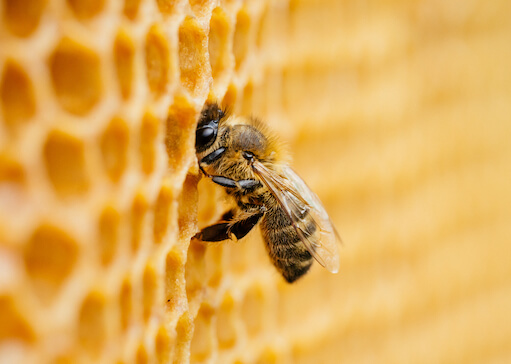Véto-pharma Supports the Men and Women Dedicated to Animal Health
Founded in 1982, Véto-pharma is a French pharmaceutical laboratory specialising in animal health.
Our teams of experts work daily to develop, produce, and market innovative solutions to support professionals in the field. With its own research centre dedicated to bees, Véto-pharma places innovation at the core of its activities.
Our Activities

We provide effective, innovative, and high-quality solutions to support the beekeeping industry.

We are the preferred CDMO partner for many companies in the veterinary sector.
The Latest Blog Posts

What‘s driving the US bee colony losses?
USDA research links bee colony losses to multiple stressors. Resilient, informed, and collaborative practices are key to pollinator health.

Selective trap for Asian hornet shows promising results
Selective trap for Asian hornet control by Véto-pharma—eco-friendly, affordable, and effective in protecting biodiversity and beekeeping.

Honey bee colony starvation during the season
This article helps you understand and anticipate the phenomenon of seasonal famine in bees (also known as the “nectar dearth”), which drives them to consume the honey stored in supers.

Swarm Management in Spring
Practical swarm management tips for spring: how to detect, prevent, or support swarming based on your beekeeping goals.

Discover Véto-pharma’s Beekeeping Tips and Tricks
The Véto-pharma apiary team shares its tips and tricks for better daily hive management.

Tropilaelaps is lying in wait – Can Amitraz efficiently reduce infestations?
The Asian-native Tropilaelaps mite is spreading and threatening Apis mellifera hives. We’re testing Amitraz as a potential treatment.
Our Latest Publications

A 28-page guide on how to optimize bee nutrition and thus strengthen their development, co-written with Pajuelo Consultores, beekeeping experts.

In winter, as temperatures drop, bees become less active, and the availability of natural forage decreases. Your bees will need extra help to survive the cold season.

Read our new 20-page guide on “Integrated Varroa Mite Management throughout the Seasons” co-written with Dr. Gérald Therville, a french veterinarian with a specialized diploma in Beekeeping.

This document offers an overview to enhance readers’ understanding on Amitraz resistance and clarify common misconceptions.

Practical guide summarizing the usage recommendations for the MegaBee protein supplement: how to use it, when to use it, for how long, etc.

This brochure presents key information about the new “MegaBee” protein supplement for stronger colonies in just a few pages.








